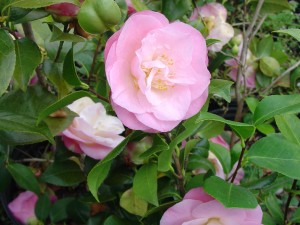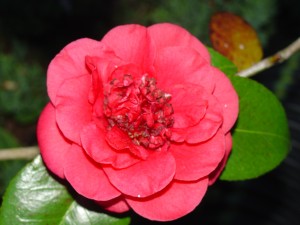
Several camellias bloom reliably either in the fall and or early spring in most areas of Tennessee within USDA hardiness zone 6. In the colder higher elevations above 2000 feet, hardy camellias require some additional shelter to successfully bloom over 6 – 8 weeks. Flower colors range from white, many shades of pink, and red.
Growing camellias is very much like that of rhododendrons, but with a lot less hassle with disease and insect pests. The foliage of hardy camellias remains lustrous green year-round. Camellias relish a richly organic, well-drained, and acidic soil.
A garden site with a northeasterly exposure is a perfect nook, partially shaded from the harsh mid-day summer sun and protected from the cold drying winds of winter.
Common name: Zone 6 Hardy camellias
Botanical name: Camellia spp.
Cultivars recommended: Over 40 available; recommend starting with ‘Pink Icicle’ and ‘April Tryst’ (spring bloomer) and ‘Winter Star’ and ‘Yuletide (autumn flowering).
Type: flowering shrub
Size: 8 – 12 feet tall and 6 feet wide (see pruning)
Soil: well-drained, moist, organically amended soil; maintain a mulch depth of 2-3 inches of pine bark chips or needles.
When to plant: container plants are planted from late winter (March) through early October
Exposure: full morning sunlight, protect from afternoon heat and sunlight and drying winter winds
Watering: adequately irrigate camellias during first two years when rainfall is sparse. Established camellias demonstrate good heat and drought tolerances.
Fertilizer: nourish with an acidifying fertilizer such as Miracid™, Hollytone™ or equivalent in the months of March, May and July
When to prune: prune in very late May to reduce shrub height and broaden width
In your landscape: hardy camellias bloom with large showy flowers at a time of year when few plants do. Some exhibit exceptional evergreen foliage to rival most hollies. Be forewarned: habit-forming, you will desire to plant more camellias


 Posted in
Posted in  Tags:
Tags: 
